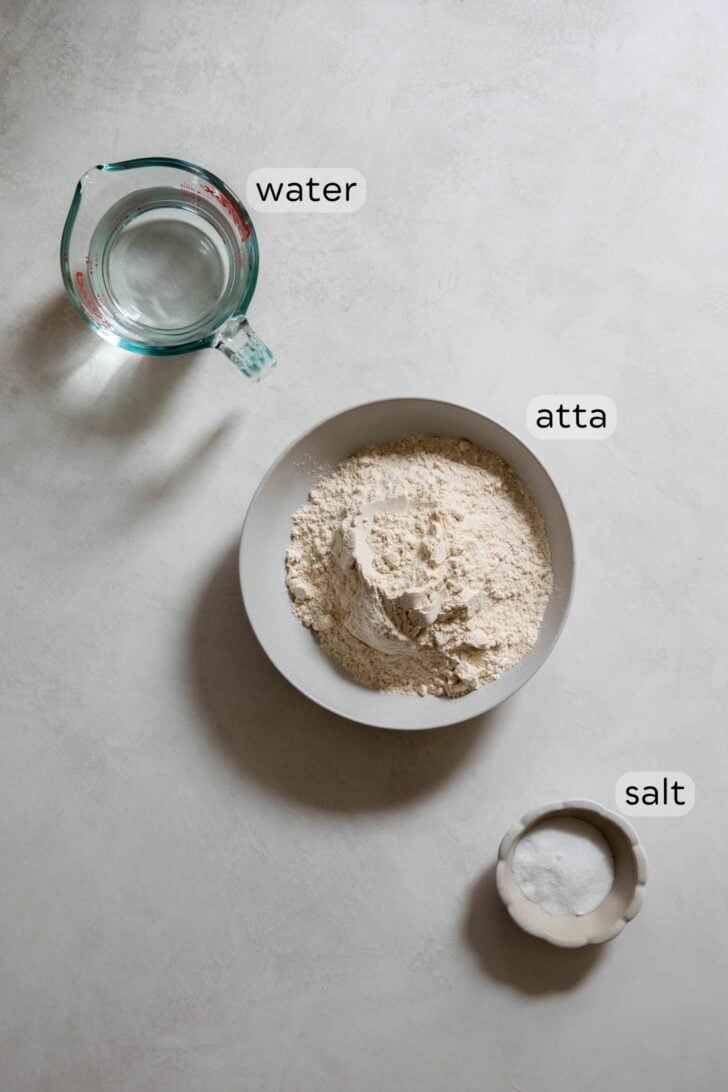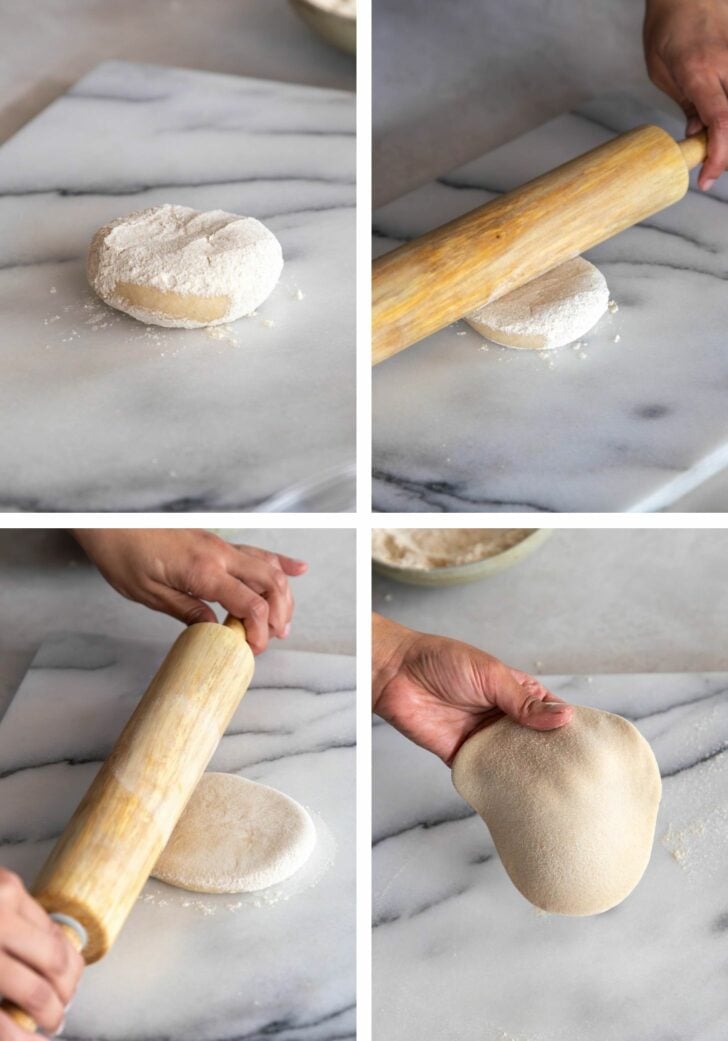Roti Recipe
The art of making Rotis or Parathas can’t be distilled into a recipe. But, having helped several people improve their Rotis, I know there are key techniques or “aha moments” that can instantly elevate your Roti-making skills. In this post, I share the nuances that take your Rotis from hit-and-miss to puffy every time. Enter your email below and get it sent straight to your inbox. Plus, get recipes & tips every week! Apart from getting the dough (or atta) right and rolling it out evenly (more on that later), the key to making Rotis puff up is the 3-flip technique:
Ingredients
The dough/atta is the same whether you’re making Roti or Paratha. Rotis are not fussy or complex, but they’re a skill you refine over time. That said, some fundamentals and techniques will shorten your learning curve, and you’ll find them all in this post. Let’s go!
Atta (durum wheat flour): This is whole wheat flour sourced from India or Pakistan, different in variety and processing from the 100% whole wheat flour found at American stores. Look for Atta at Indo-Pak grocery stores as opposed to online – it’s much cheaper and probably more fresh. (I often shop by expiration dates.) Sea salt: Not required, but improves flavor. Water: I use room temperature or slightly warm (tepid) water for making Rotis. While we opt for hot or boiling water when working with tougher, grainier flours like Sorghum or Buckwheat, it’s not ideal for regular Rotis. Using hot water can make the dough too delicate and difficult to handle.
How to make Roti
The full instructions are in the recipe card. This section shares tips and nuances that’ll help you execute the recipe:
Popular Brands for 100% Whole Wheat Atta
Popular Flour Blends (Not 100% Whole Wheat)
Substitute: Years ago, when I lived in West Texas, and couldn’t find atta, I’d substitute with a blend of 70% white whole wheat and 30% all-purpose flour (maida). Not the same, but it would somewhat mimic the flavor and texture.
1 – Make Roti Dough (Atta)
Combine the atta and salt in the bowl of a stand mixer fitted with a dough attachment or other large bowl if kneading by hand. Note that I used a standard, 4.5 Qt mixer to test this recipe. For larger sized mixtures (5.5 qt+), you’ll have to double the recipe.
Gradually add water to the flour. Adding water too quickly will make it difficult to control the distribution of water, and this uneven hydration may cause sticky/wet dough and even small lumps of flour (ghutliyan). Adding water too slowly can cause the dough to form before the flour has fully hydrated, which can make your dough tough. Tough dough = tough Rotis. Knead the dough. If using a stand mixer, increase the speed and continue to knead on until a smooth and supple ball forms. Be patient here and let it go for as long as it needs to start wrapping itself around the dough attachment.
Make your peda. It may seem like something you don’t need to pay much attention to it, but your peda lays the foundation for your Roti. There’s no one right way to form it – I roll one forward, then pull it back toward the middle. (See photos/video.)
After forming and flattening the peda, I like to pre-shape by holding the flattened peda in one hand while using the palm and fingers of my other hand to gently press and stretch.
6 – Place Roti on Tawa for 10-15 Seconds
The tawa should be preheated/very hot but not smoking. Once the Roti is on the tawa but not yet set, take the opportunity to gently adjust and round it out. Flip #1: As soon as the bottom starts to set (this will take 10-15 seconds), immediately flip the Roti using a tong, large spatula, or a pancake turner. Do not allow it to completely set and cook as that’ll decrease the chances of a puffy Roti.
Tried this recipe? If you have a minute, please consider leaving a comment telling me how it was! You can also take a quick picture and upload it directly into the comments. If you’re on Instagram, please tag me so I can see your creations. I truly love hearing from you. Thank you!
Add fat: Add 1 tbsp of ghee or oil into the dough, which makes them slightly crispy yet soft. Use warm/hot water: As I mentioned earlier, hot water makes the dough soft, but harder to work with. Using boiling water makes them almost break-apart soft. Yogurt: Adding 1 tablespoon of yogurt to the dough softens the atta.





















